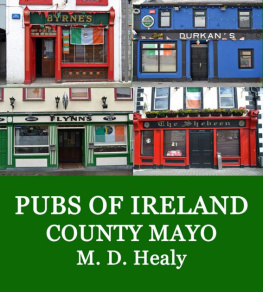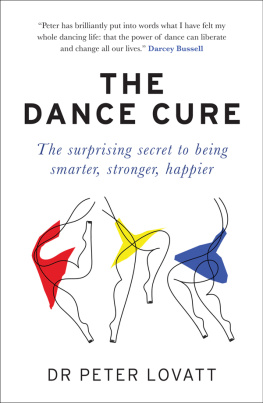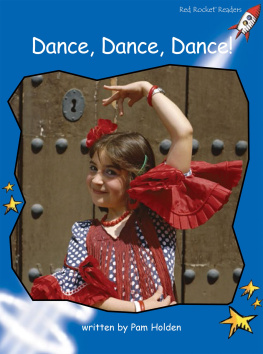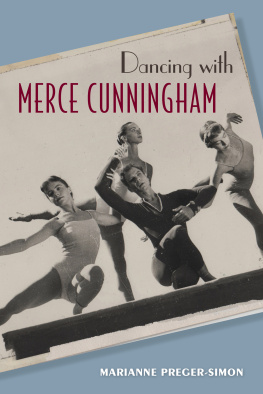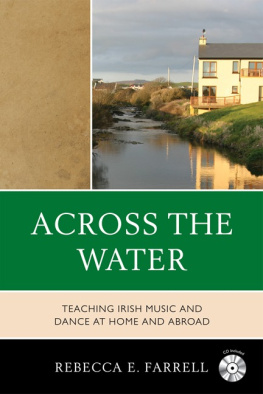Dancing at the Crossroads
DANCE AND PERFORMANCE STUDIES
General Editors:
Helen Wulff, Stockholm University and Jonathan Skinner, Queens University Belfast
Advisory Board:
Alexandra Carter, Marion Kant, Tim Scholl
In all cultures, and across time, people have danced. Mesmerizing performers and spectators alike, dance creates spaces for meaningful expressions that are held back in daily life. Grounded in ethnography, this series explores dance and bodily movement in cultural contexts at the juncture of history, ritual and performance, including musical, in an interconnected world.
Volume 1
Dancing at the Crossroads: Memory and Mobility in Ireland
Helena Wulff
Volume 2
Embodied Communities: Dance Traditions and Change in Java
Felicia Hughes-Freeland
Volume 3
Technomad: Global Raving Countercultures
Graham St John
Dancing at the Crossroads
Memory and Mobility in Ireland

Helena Wulff

First published in 2007 by
Berghahn Books
www.berghahnbooks.com
2007, 2009 Helena Wulff
First paperback edition published in 2009
All rights reserved. Except for the quotation of short passages
for the purposes of criticism and review, no part of this book
may be reproduced in any form or by any means, electronic or
mechanical, including photocopying, recording, or any information
storage and retrieval system now known or to be invented,
without written permission of the publisher.
Library of Congress Cataloging-in-Publication Data
Wulff, Helena.
Dancing at the crossroads : memory and mobility in Ireland / Helena Wulff.
p. cm. -- (Dance and performance studies)
Includes bibliographical references and index.
ISBN 978-1-84545-328-2 (hardback) -- ISBN 978-1-84545-590-3 (paperback)
1. Dance--Ireland. 2. Folk dancing, Irish--History. I. Title.
GV1646.I8W85 2008
793.3'19415--dc22
2007043684
British Library Cataloguing in Publication Data
A catalogue record for this book is available from the British Library
Printed in the United States on acid-free paper
ISBN 978-1-84545-328-2 hardback
ISBN 978-1-84545-590-3 paperback
Contents

But beneath the words is another sound:
the echo of tapping, stamping, drumming feet.
They reverberate down the centuries and resound
from the floors and walls of deserted cabins,
the timbers of emigrant ships,
the stages of the cities of America and Britain,
the platforms of roadside dancing decks;
from tables, barrel tops, half-doors;
indeed, from any surface which could amplify
that most insistent beat of Irish life
the rhythm of the dance.
Helen Brennan
The Story of Irish Dance
Acknowledgements

When I first arrived in Ireland, I was struck by a sudden sense that I had been there before.
It may have been my childhood summers on Gotland, the Swedish island in the Baltic Sea similar to Ireland in flat landscape resting on cliffs and beaches, which made me feel at home. I had long known about Ireland as a place of poetry, literature and drama. I was also aware of some of its plights in the past. As my field research unfolded, I was to learn about a new confidence that had come with the economic boom.
Applying my longstanding interest in the anthropology of dance and culture to Ireland turned out to be most rewarding analytically: dance in Ireland reflects larger theoretical issues such as memory, mobility and place as well as tradition and modernity not only in Ireland but further afield. The study was also most rewarding to do. This is a study I have thoroughly enjoyed. However, it would not, and could not, have happened without a number of colleagues and friends in dance and academia, to whom I am immeasurably grateful.
Hastings Donnans profound knowledge of Ireland, North and South, coupled with a creative cutting-edge approach, provided major inspiration and analytical clarity. His authoritative advice has been crucial. Helen Brennan bridged the dance world and the academic world. It was her MA thesis Dancing on a Plate which sparked this study. I can still recall the moment of joy of discovery when her rendering of dance competitions opened up a new avenue of research for me. Later, she would share her vast experience of Irish dance on a number of enjoyable occasions. It was because of Sean Corcoran, traditional musician and music collector, that I found my way to a competition in sean-ns (old style) dance in Connemara, one of the high points of my field research. I thank him very much for this and also for seeing to it that I went to a cil, a dance gathering, in Monkstown outside Dublin.
A versatile scholar, folklorist Diarmuid Giollin, has followed my study from beginning to end. I am most grateful for his continued support and well-informed interest. With his considerable insight into (Northern) Irish society and politics, Andrew Finlay supplied astute comments on my study. He was an excellent guide on many great nights in Dublin, some of them began at dance theatre performances. Hilary Tovey put me up in her house, which was very nice, every time. Her sociological ideas on dance in Ireland were most useful. A highly competent anthropologist of Irish competitive dancing and a musician, Frank Hall has been a main source of information and camaraderie. I have certainly appreciated our conversations. Fintan Vallely, a fountain of knowledge about traditional Irish music but also dance, who combines the perspectives of musician, writer and academic, was always very helpful and considerate. I am most grateful to him and also to Evelyn Conlon whose great literary writings often comment on contemporary Irish life. Barbara OConnor contributed in many ways to my study, not least through her well-crafted sociological work on dance and gender in Ireland. I also wish to thank Catherine Foley, Chair of Ethnochoreology and Dance Research Forum Ireland at University of Limerick, and Victoria OBrien and Orfhlarth N Bhriain.
John Cullinane, member of the Gaelic League, adjudicator of Irish dancing and noted historian of this dance form, was delightful company at dance championships and conferences. I was impressed with his Cork house archive of Irish dancing. In Tralee, Co. Clare, I had a momentous meeting with Father Pat Ahern, gifted musician and theatre man, who used to direct Siamsa Tre (The National Folk Theatre of Ireland), a community dance theatre group. I also got to interview and see Jonathan Kelliher, one of the dancers, perform, which was an important experience.
One of the key points of this book is to acknowledge connections between different dance forms. Many of the people who appear in my study were thus around in more than one dance form and capacity. Here I will put them into the context where I met them most often during the time of my field research. (There are only a few pseudonyms in the book).
Next page

